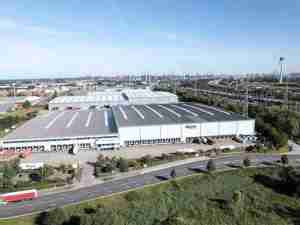The landmark Clean Trucks Program will hit its final milestone banning some 280 older container trucks and another 800 older non-container trucks from Port terminals. Although the final ban starts New Year’s Day, significant reduction in truck related pollution was achieved long ago. By the end of 2011, almost all trucked container moves at the Port already were done by rigs with 2007 or newer engines.
In the new year, all 11,000 drayage trucks servicing Port terminals will be 2007 or newer models. Due to overwhelming response from the trucking industry and financial incentives offered by the Port, the goal of reducing truck related pollution by 80 percent was reached two years ahead of schedule. By early 2010, close to 90 percent of truck moves at the Port involved 2007 or newer trucks, including hundreds of low emission liquefied natural gas rigs.
Under the Clean Trucks Program, Port of Long Beach terminals began barring older rigs on October 1, 2008. The first ban included trucks with 1988 or older engines. On January 1, 2010, the Port banned most 2003 and older trucks. Neighboring Port of Los Angeles had the same bans under its Clean Truck Program.
All drayage trucks doing business at Port must register under the Clean Trucks Program. Container trucks are inspected and equipped with radio frequency identification (RFID) tags. Only trucks meeting the Port’s environmental, safety and security standards get a green light to enter shipping terminals. Non-container trucks receive stickers.









